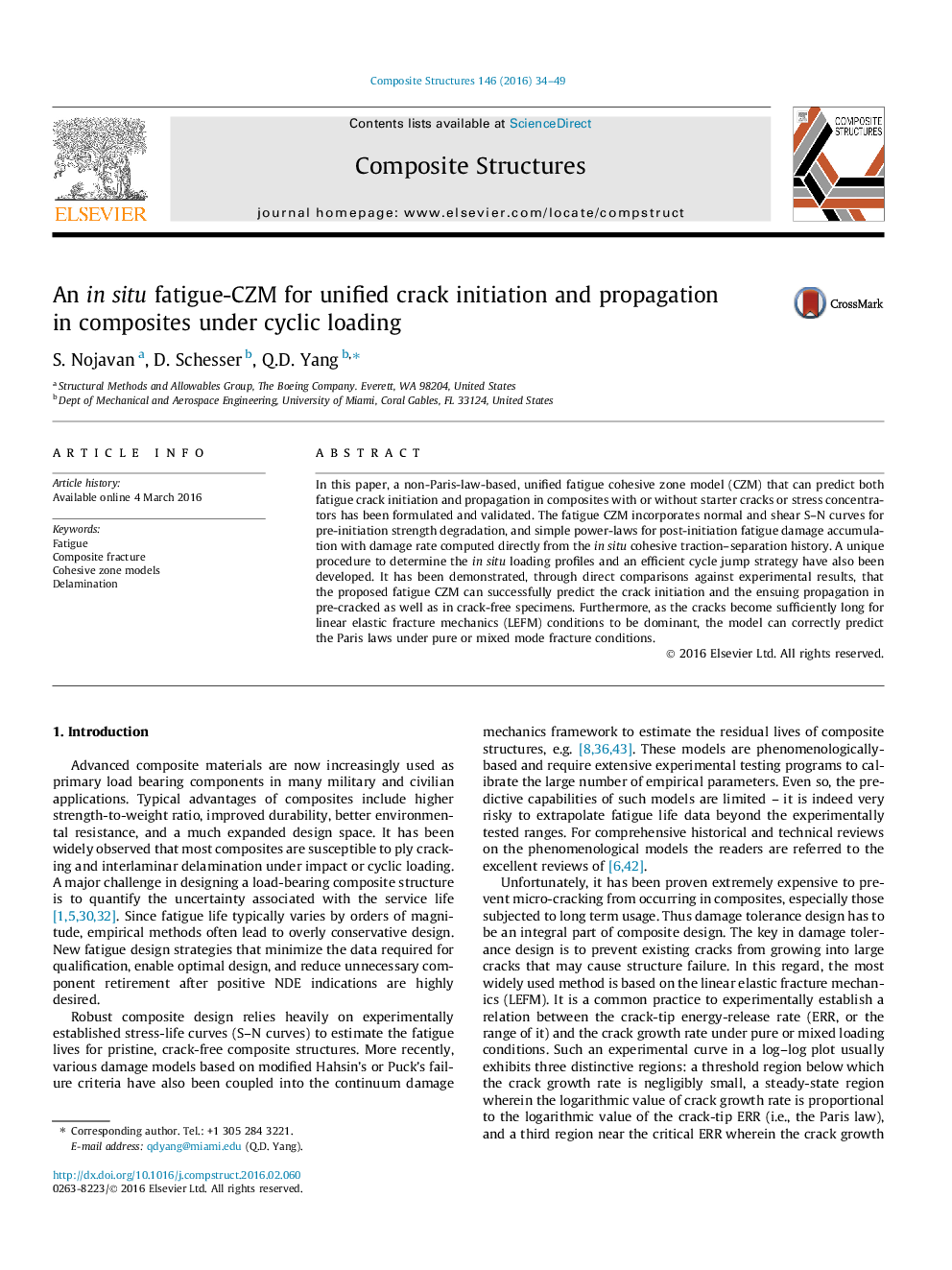| Article ID | Journal | Published Year | Pages | File Type |
|---|---|---|---|---|
| 250868 | Composite Structures | 2016 | 16 Pages |
In this paper, a non-Paris-law-based, unified fatigue cohesive zone model (CZM) that can predict both fatigue crack initiation and propagation in composites with or without starter cracks or stress concentrators has been formulated and validated. The fatigue CZM incorporates normal and shear S–N curves for pre-initiation strength degradation, and simple power-laws for post-initiation fatigue damage accumulation with damage rate computed directly from the in situ cohesive traction–separation history. A unique procedure to determine the in situ loading profiles and an efficient cycle jump strategy have also been developed. It has been demonstrated, through direct comparisons against experimental results, that the proposed fatigue CZM can successfully predict the crack initiation and the ensuing propagation in pre-cracked as well as in crack-free specimens. Furthermore, as the cracks become sufficiently long for linear elastic fracture mechanics (LEFM) conditions to be dominant, the model can correctly predict the Paris laws under pure or mixed mode fracture conditions.
